What we do
We provide modeling and custom software as well as offer our already developed software to simulate
the most
challenging material failure problems in structural, mechanical,
civil, aerospace, and other engineering disciplines.
These include finite element software in the areas of
-
constitutive models of inelasticity, damage,
phase field in large or linearized kinematics,
-
coupled problems,
-
mesh generators that guarantee quality elements and
isoperimetry (i.e., absence of preferred orientation)
especially for cohesive modeling,
-
cohesive fracture.
-
AI based multiscale analysis
Highlights of our cohesive fracture code
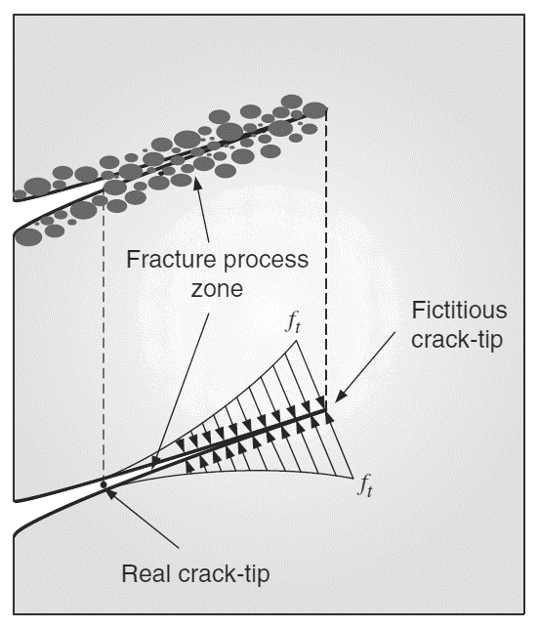
-
A general-purpose solver that assumes gradual
decohesion of interfaces according to an "initially rigid"
traction-separation relationship, whose parameters
are Gc
and the material tensile strength or the critical crack
opening at loss of cohesion.
-
Energy-based, meaning that the solution is obtained by
minimizing an energy functional. This would be the same
as usual FEM for a smooth convex functional but here
the cohesive potential makes the functional singular and non-convex.
-
Incorporates an in-house developed mesh generation package
that guarantees well-shaped and isotropic elements suitable for
cohesive modeling. The above meshes are generated in a matter of seconds.
The numerical results indicate that the solution is unique and convergent.
-
Is convergent in time and with respect to mesh refinement.
Theory and computational studies indicate that our code
converges both with respect to time-step (left figure below) and
with mesh refinement (right figure below).
Other widely used methods do not always share these properties.
Convergence leads to improved robustness.
-
The energy method provides a "time continuous" solution,
which means a more robust solution.
In particular it results in smooth velocity profiles,
which proved crucial in our hydraulic
fracture simulations, see velocity contours below.
Our code
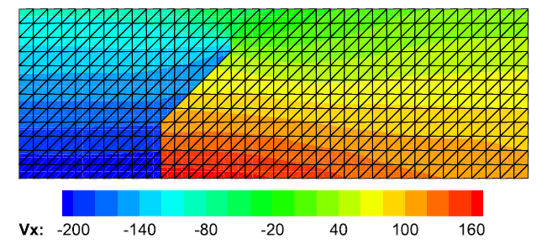
Time discontinuous code
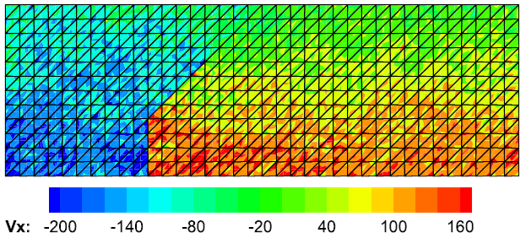
©2020 K. D. Papoulia. All rights reserved.

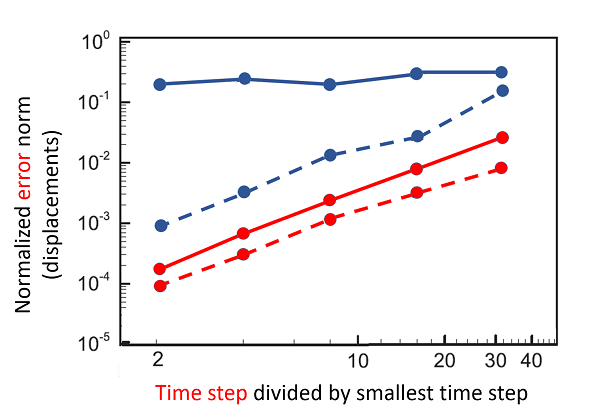
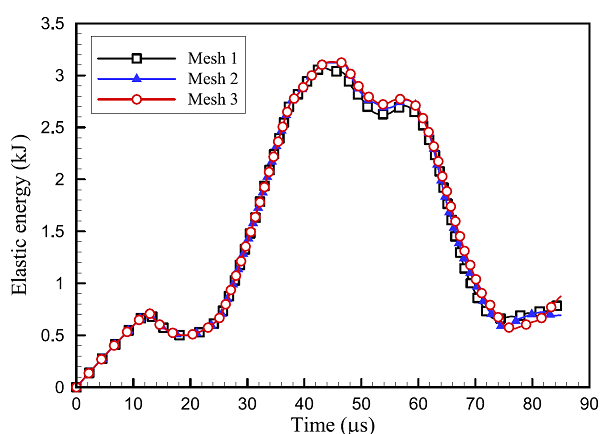


 tesserae
tesserae